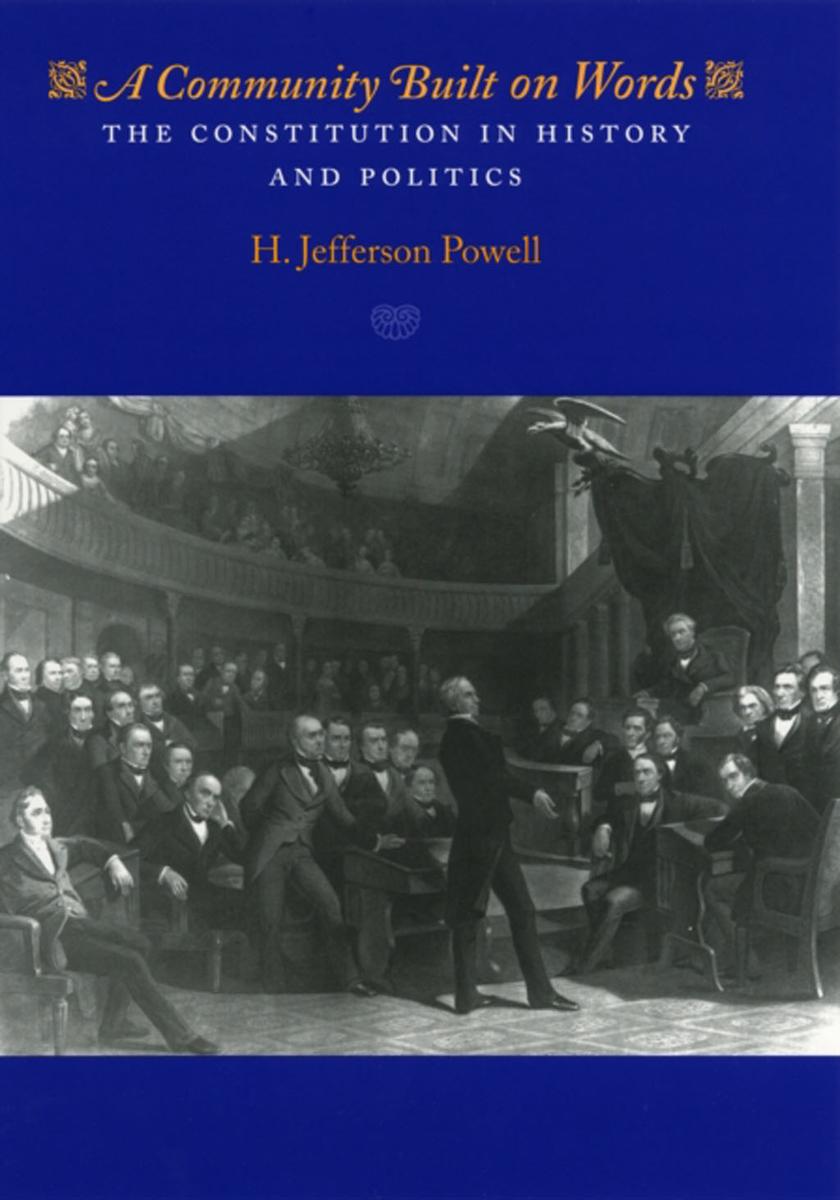
Community Built on Words
¥282.53
H. Jefferson Powell offers a powerful new approach to one of the central issues in American constitutional thinking today: the problem of constitutional law's historicity, or the many ways in which constitutional arguments and outcomes are shaped both by historical circumstances and by the political goals and commitments of various actors, including judges. The presence of such influences is often considered highly problematic: if constitutional law is political and historical through and through, then what differentiates it from politics per se, and what gives it integrity and coherencePowell argues that constitutional theory has as its (sometimes hidden) agenda the ambition of showing how constitutional law can escape from history and politics, while much constitutional history seeks to identify an historically true meaning of the constitutional text that, once uncovered, can serve as a corrective to subsequent deviations from that truth.Combining history and theory, Powell analyzes a series of constitutional controversies from 1790 to 1944 to demonstrate that constitutional law from its very beginning has involved politically charged and ideologically divisive arguments. Nowhere in our past can one find the golden age of apolitical constitutional thinking that a great deal of contemporary scholarship seeks or presupposes. Viewed over time, American constitutional law is a history of political dispute couched in constitutional terms.Powell then takes his conclusions one step further, claiming that it is precisely this historical tradition of argument that has given American constitutional law a remarkable coherence and integrity over time. No matter what the particular political disputes of the day might be, constitutional argument has provided a shared language through which our political community has been able to fight out its battles without ultimately fracturing.A Community Built on Words will be must reading for any student of constitutional history, theory, or law.

Punitive Damages
¥282.53
Over the past two decades, the United States has seen a dramatic increase in the number and magnitude of punitive damages verdicts rendered by juries in civil trials. Probably the most extraordinary example is the July 2000 award of $144.8 billion in the Florida class action lawsuit brought against cigarette manufacturers. Or consider two recent verdicts against the auto manufacturer BMW in Alabama. In identical cases, argued in the same court before the same judge, one jury awarded $4 million in punitive damages, while the other awarded no punitive damages at all. In cases involving accidents, civil rights, and the environment, multimillion-dollar punitive awards have been a subject of intense controversy.But how do juries actually make decisions about punitive damagesTo find out, the authors-experts in psychology, economics, and the law-present the results of controlled experiments with more than 600 mock juries involving the responses of more than 8,000 jury-eligible citizens. Although juries tended to agree in their moral judgments about the defendant's conduct, they rendered erratic and unpredictable dollar awards. The experiments also showed that instead of moderating juror verdicts, the process of jury deliberation produced a striking "severity shift" toward ever-higher awards. Jurors also tended to ignore instructions from the judges; were influenced by whatever amount the plaintiff happened to request; showed "hindsight bias," believing that what happened should have been foreseen; and penalized corporations that had based their decisions on careful cost-benefit analyses. While judges made many of the same errors, they performed better in some areas, suggesting that judges (or other specialists) may be better equipped than juries to decide punitive damages.Using a wealth of new experimental data, and offering a host of provocative findings, this book documents a wide range of systematic biases in jury behavior. It will be indispensable for anyone interested not only in punitive damages, but also jury behavior, psychology, and how people think about punishment.

Art of Toy Story 4
¥282.43
With a story that's spanned more than 20 years, the adventures of Woody, Buzz Lightyear, and the gang have captured the hearts of millions. The Art of Toy Story 4 invites readers to explore the next installment of Pixar's beloved franchise through never-before-seen concept art, character studies, process animation, storyboards, colorscripts, and more. Featuring exclusive interviews with the production team on the making of the film and insights into their creative vision, The Art of Toy Story 4 reveals the vivid imagination that brought this story to life.Copyright 2019 Disney Enterprises, Inc. and Pixar. All rights reserved.
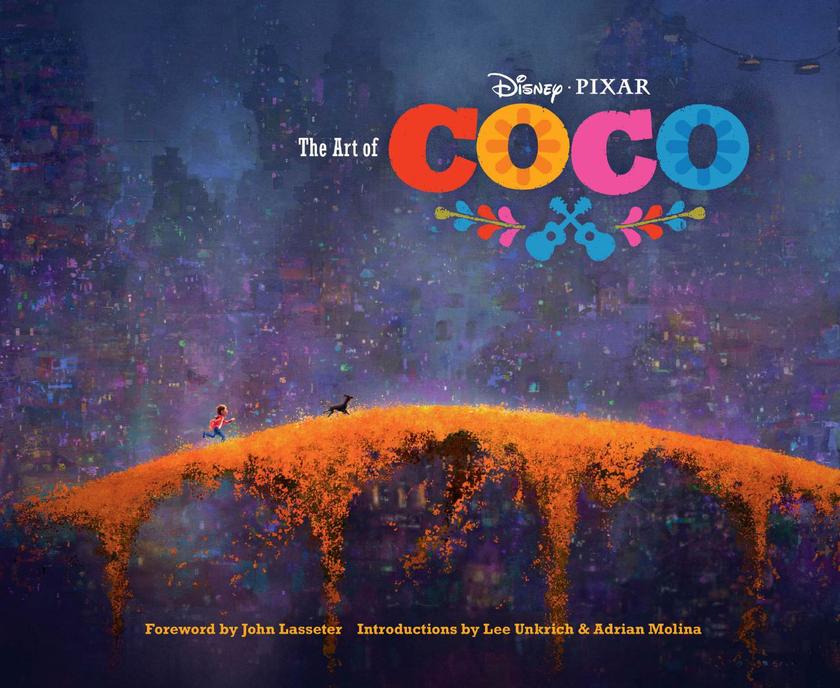
Art of Coco
¥282.43
Pixar is proud to introduce the must-have companion to the vibrant new feature film Coco. The creation of Coco's mesmerizing world is explored in detail through colorful artwork, energetic character sketches, intriguing storyboards, and spellbinding colorscripts. Featuring insights from the production team about the making of the film and production art that bursts off the page, The Art of Coco overflows with insights into the creative process behind Pixar's unique and engaging vision.Copyright 2017 Disney Enterprises, Inc. and Pixar. All rights reserved.

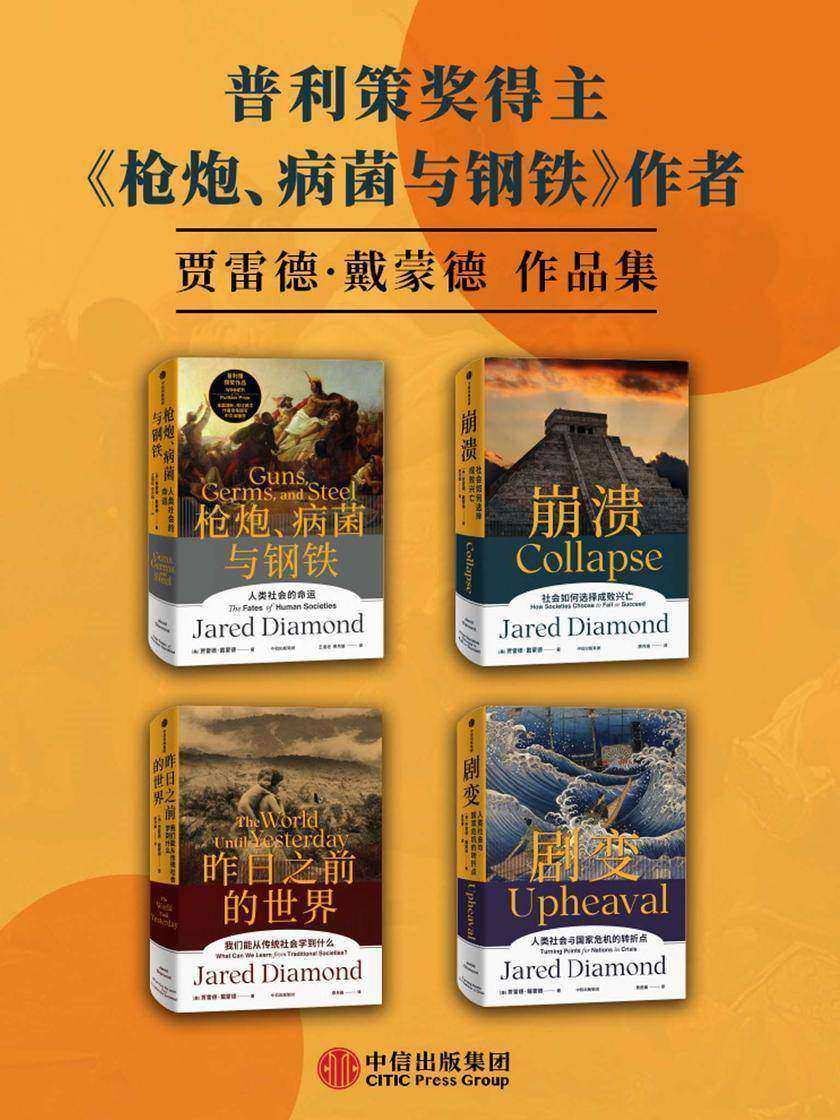
贾雷德·戴蒙德作品集(套装共4册)
¥282.10
《枪炮、病菌与钢铁》内容简介: 文明的先发与落后,社会的发展与倒退等问题,一直是人类关注的大议题。就此,西方社会普遍认为西方国家先进的技术、完善的社会阶层、百花齐放的文化成果,共同造就了西方文明优于其他,并决定了西方统治世界的地位,甚至认为究其根本是西方种族的优越性决定的。《枪炮、病菌与钢铁》告诉我们,答案并非如此。环境因素才是决定历史的车轮向西方倾斜倾,文明的进步的确助推了文化、技术和组织的先发,但同时也导致了细菌的侵袭和船坚利炮对文明的致命摧毁,也就是说,种族决定论和西方文明优势论都无法解释为什么西方国家可以统治世界百年之久。是环境与资源的优渥滋养了西方文明的发展。 此外,戴蒙德从生物学、地理学、历史学、社会学、人类学等跨学科视角颠覆了很多人们习以为常的社会发展疑问,为我们理解人类历史提供了崭新的视角。从深耕专业领域的科学家,到关注人类社会与命运的思想者,戴蒙德从科学、历史、社会的交叉点探究地理、人类与未来,他在某种程度上代表了西方公共知识分子传统的转向——从专业性转向思想性,他依仗多学科的视角和丰富的游历经验,追思人类历史的发展路径,从中寻找经验与教训,试图为人类社会未来的发展提供建议。 《崩溃》内容简介:本书所说的“崩溃”,是指某一人类社会在相当长一段时间内,人口急剧减少,政治、经济、社会复杂程度骤降,终至瓦解。这在人类历史上并不罕见,许多壮丽的文明遗址引发幽古之思,人们在抚今追昔时,不免产生疑问:为什么有些社会得以繁荣延续,有些社会却走向衰亡,*终湮没在历史长河中? 为了回答这个问题,在本书中,戴蒙德延续其思考框架,聚焦生态环境与人类文明的关系。在比较历史研究的视野下,戴蒙德以自己熟悉的美国蒙大拿州作为引子,纵向比较了复活节岛、玛雅文明、格陵兰岛的维京社会、德川幕府时期的日本等过去社会的兴衰存亡,又横向分析了卢旺达、海地与多米尼加、中国、澳大利亚等现代社会的发展与困境。这些文明社会面临着相似的危机——在污染、瘟疫、战争、饥荒的背后,千疮百孔的生态环境是社会走向败亡的大前奏,而不同社会应对环境问题的选择决定了它们迥异的结局。基于此,生态环境如何影响人类社会的命运这一议题,从一个宏大模糊的背景角色走到前台的聚焦点下,一些从前历史研究所忽略的关键信息被提取出来,重塑了人们对社会发展的认知。 今天,现代社会同样面临危机——人口压力、全球性的环境破坏,地区性的崩溃可能会迅速向全世界蔓延。经济发展与环境保护是否不可兼得?戴蒙德为我们敲响警钟:我们对这一问题的理解与抉择将决定当今社会的兴盛或衰落。 《昨日之前的世界(第二版)》内容简介:传统社会对现代社会来说意味着什么?是充满冲突与混乱的蛮夷之地,还是尽享田园生活的世外桃源?但无论如何它离我们并不遥远,而且潜移默化地影响着现代社会人们的生活方式。传统部族社会的社会实践要比现代国家社会更久远,它在如何组织一个人类社会的问题上,已经进行了成千上万次自然的实验。普利策奖得主贾雷德?戴蒙德在新书《昨日之前的世界》中就一探传统社会的生活方式能为现代社会带来哪些启示。在新几内亚部落生活了近50年的戴蒙德通过对部落社会生存环境、生活习俗、行事方式的观察、记录来剖析人类社会的演进,这本书就是他多年研究的结晶。 戴蒙德在书中再次展现了他知识的广度与深度,从人类学、社会学、语言学、生理学、营养学和演化生物学等角度剖析区域划分、战争冲突、人际关系、养育孩子、对待老人、应对危机、宗教信仰、语言习得、健康膳食这9个方面,全 面、生动地展现了传统社会*核心的生活方式。这9个代表传统社会的小切面也同样主宰着今日世界,因此,值得生活在现代社会的我们参考和借鉴。 伴随着科技的高速发展,现代人往往在快节奏的生活中迷失了自我,人际关系疏远、社会分配不公、愤世情绪高涨、社会冲突不断、身体亚健康、盲目崇拜流行文化等问题已成为现代社会的桎梏,在这一背景下,我们应该回顾人类祖先的原始生活方式,追溯那些曾经帮助人类完善自我、建立文明与有序社会的良好根基,而这就是“昨日之前的世界”。相信每个想要关心人类社会演变历史和未来趋势的读者都不会错过《昨日之前的世界》。 《剧变(第二版)》内容简介:《剧变》是一部恰逢其时的巨作。在个人与国家都对未来充满迷茫,危机接踵而至的当下,普利策奖得主、《枪炮、病菌与钢铁》作者贾雷德·戴蒙德再一次回归历史,尝试解答危机应对这一关乎人类未来的重要命题。 对个人而言,危机可以改变一个人的成长轨迹,如处理不当,个人终其一生会生活在负面情绪中。对整个人类社会而言,危机可使一种文明没落,使一个国家解体,使一个时代终结。但在戴蒙德看来,二者并无差异,国家甚至可以借鉴个人化解危机的逻辑框架以实现自救。就此,戴蒙德再一次跳脱了自然科学与社会科学互设的知识壁垒,重建自然状态与文明秩序相融的历史叙事线索,巡礼7个案例国家的危机应对历史。他以一位社会观察者的自谦视角,从社会学、心理学、政治学、经济学、进化生物学等多学科出发,给出了“危机应对12个步骤”: 1. 直面危机 2. 主动承担责任 3. 明确问题的边界 4. 寻求帮助 5. 借鉴榜样 6. 自我力量/国家认同 7. 诚实自我评估 8. 应对危机的过往经验 9. 耐心 10. 自身灵活性 11. 核心价值观 12. 个人约束条件/国家地缘约束 正如丘吉尔所言:“永远不要浪费一场好危机。”危机与剧变总是结伴而行。戴蒙德的危机应对方案或许可以帮助人类重塑危机意识,毕竟在瞬息万变的时代,个人、企业、国家乃至整个人类社会都要不断进行选择性变革。你做好准备了吗?这或许也是戴蒙德为我们设下的一个开放性思考题。


减脂新趋势:了解身体自然瘦(共5册)
¥281.99
减肥失败,可能不是我们没有毅力。听懂身体要说的话,才能正确养生。套装共5册,分别为《肠活生活》《惊人的自然瘦身力》《听身体的话》《吃出自愈力》《吃出代谢力》

儒(南怀瑾独家授权定本种子书)
¥281.40
汇集了南怀瑾先生讲述儒家经典的所有著述。既有讲述人们熟知的“四书”(《论语》《孟子》《大学》《中庸》)的著述,又有讲述被奉为群经之首的《易经》和《周易·系辞》的著述。“四书”蕴含了儒家思想的核心内容,是儒学认识论和方法论的集中体现,更是中国传统文化中的核心要义;《易经》更被奉为群经之首,广大精微,包罗万象,是儒家、道家共同的经典,是中华文明源头和代表。南怀瑾先生讲经典,从不仅止于阐释经义,而是通过儒释道等思想的融会贯通,通过上下五千年人文历史的佐证,通过古今中外世事的投射,通过南先生自身的生命体认,把遥远的经典讲到了当代人的日常行止之中,讲到了当下人事的方方面面,让经典靠近读者。

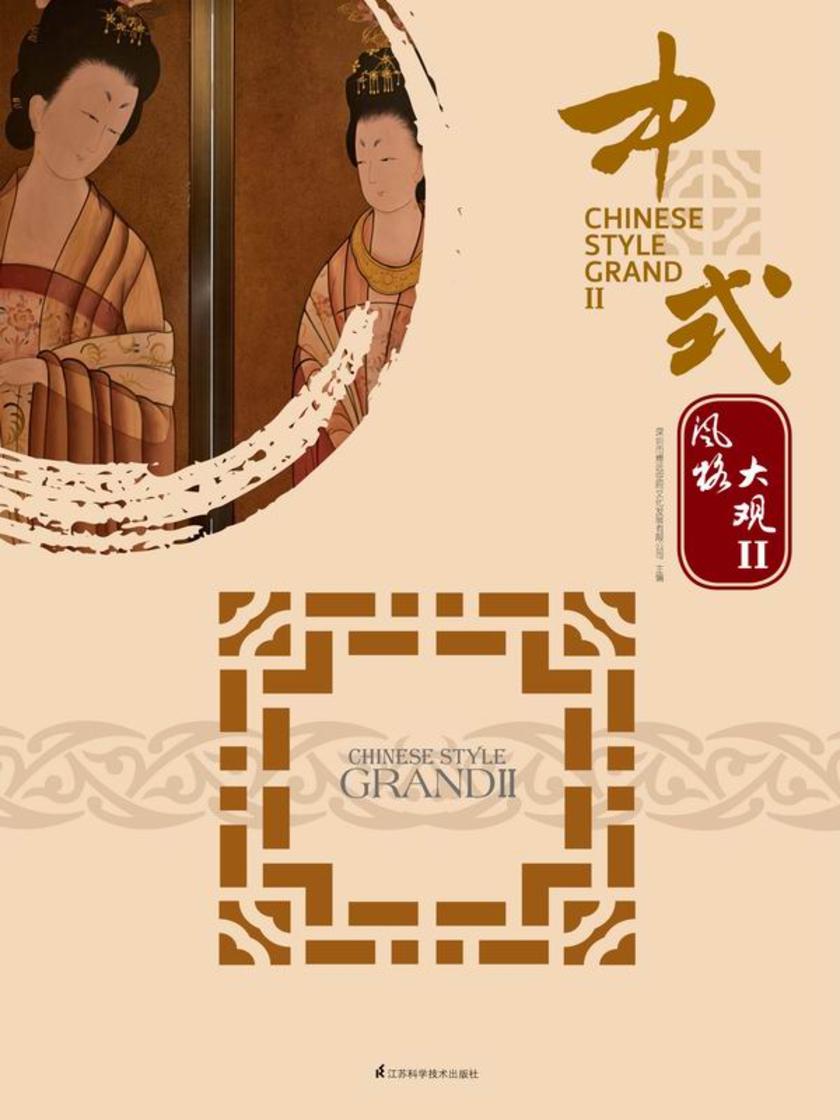
中式风格大观 II
¥281.00
《中式风格大观Ⅱ》收录了国内外优秀设计师和设计机构的中式风格室内设计作品,重点突出设计案例里中式风格的表达与内涵。所选作品不仅有详细的设计说明和精美的实景图片,详细阐述了现阶段*、全的室内中式风格设计作品的共性和个性,并且每张图片都配有详实的文字介绍,内容涵盖茶楼、会所、餐厅、酒店、别墅、样板房等类别的作品,多角度、多层面地展示了国内外*的中式室内设计项目的设计理念和细节魅力。
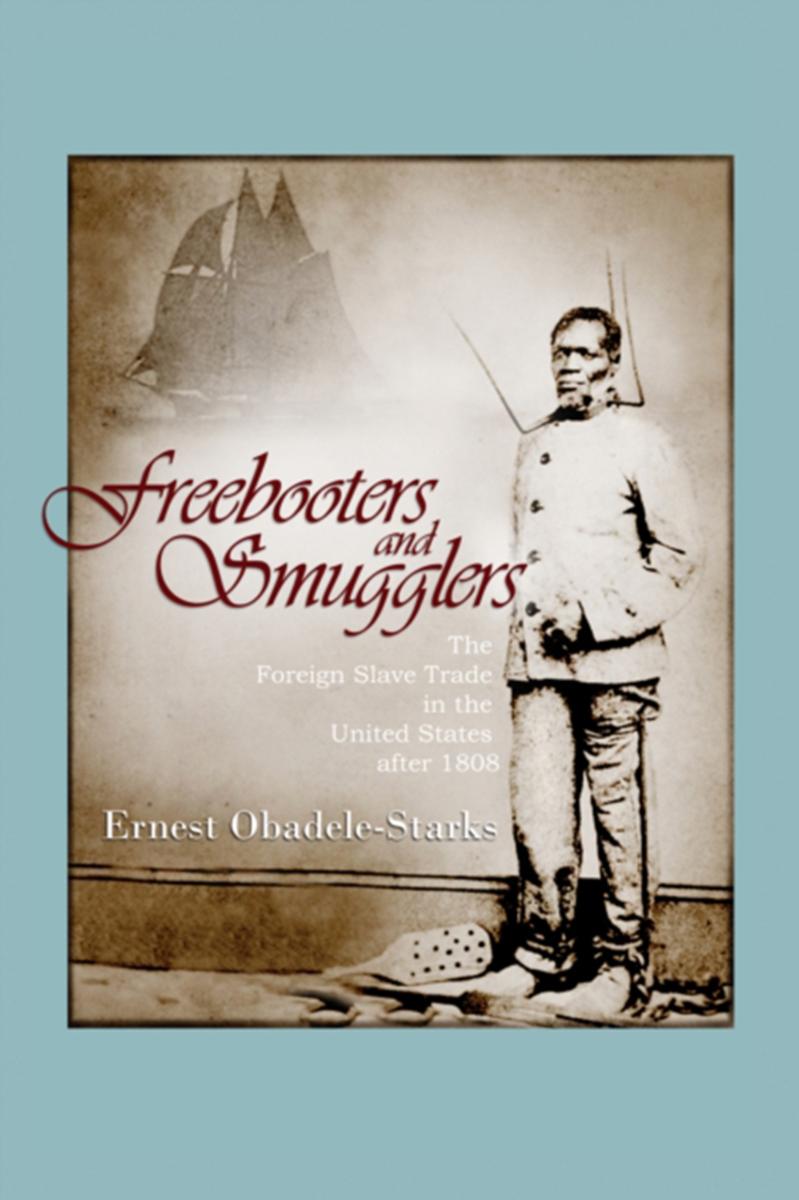
Freebooters and Smugglers
¥280.96
This book is the result of several years of collaboration with historians, students, archivists, and friends.The final product owes much to a collection of individuals who offered insight, analysis, recommendations, and sometimes their gut-level opinion about the project. In reflecting on its evolution, this study benefited greatly from two individuals in particular. In the embryonic stages of this work, Cynthia Bouton, being the true colleague that she is, took time from her own hectic academic schedule to offer several critiques, probing questions, and trenchant comments about the manu*.At a later stage in the writing, Gwendolyn Midlo Hall canvassed the study, detected gaps, and then pointed me toward additional sources without which the final product would not have been as thorough.


你好,自然(小学通识版)
¥280.80
这是一个关于自然的博物类套装书,包括图书和材料包。它主要介绍了昆虫、植物、鸟类这些常见的自然物。以博物为主题,结合材料包,激发孩子对自然的兴趣、对生命的敬畏,提升孩子保护自我生命安全的意识,增强识别、预防危险的能力。 本书从认知、提问、探究、实践这四个维度来设计,帮助儿童了解自然,树立正确的生态观,提高科学素养。
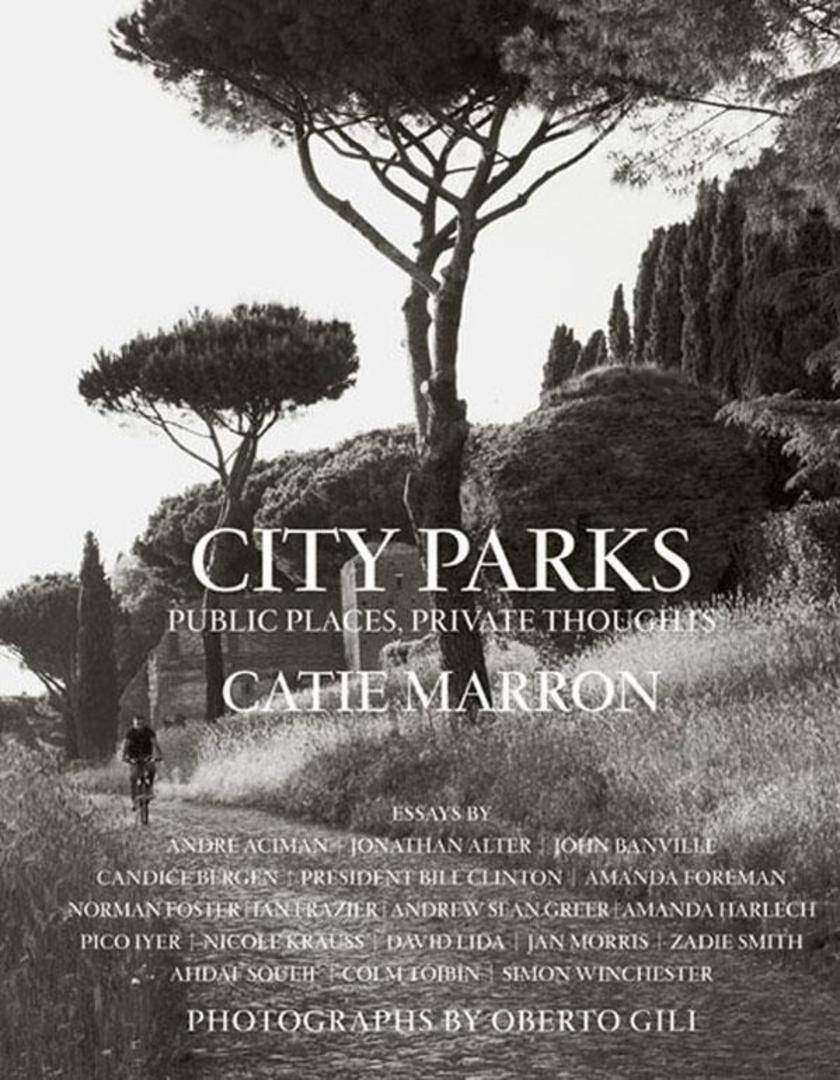
City Parks
¥280.71
City Parks illuminates the spirit and beauty of the world's most loved city parks: an extraordinary visual and poetic journey from London to Brooklyn, Calcutta to Chicago, and Paris to San Francisco, captured in breathtaking photographs and the evocative words of celebrated writers and personalities.
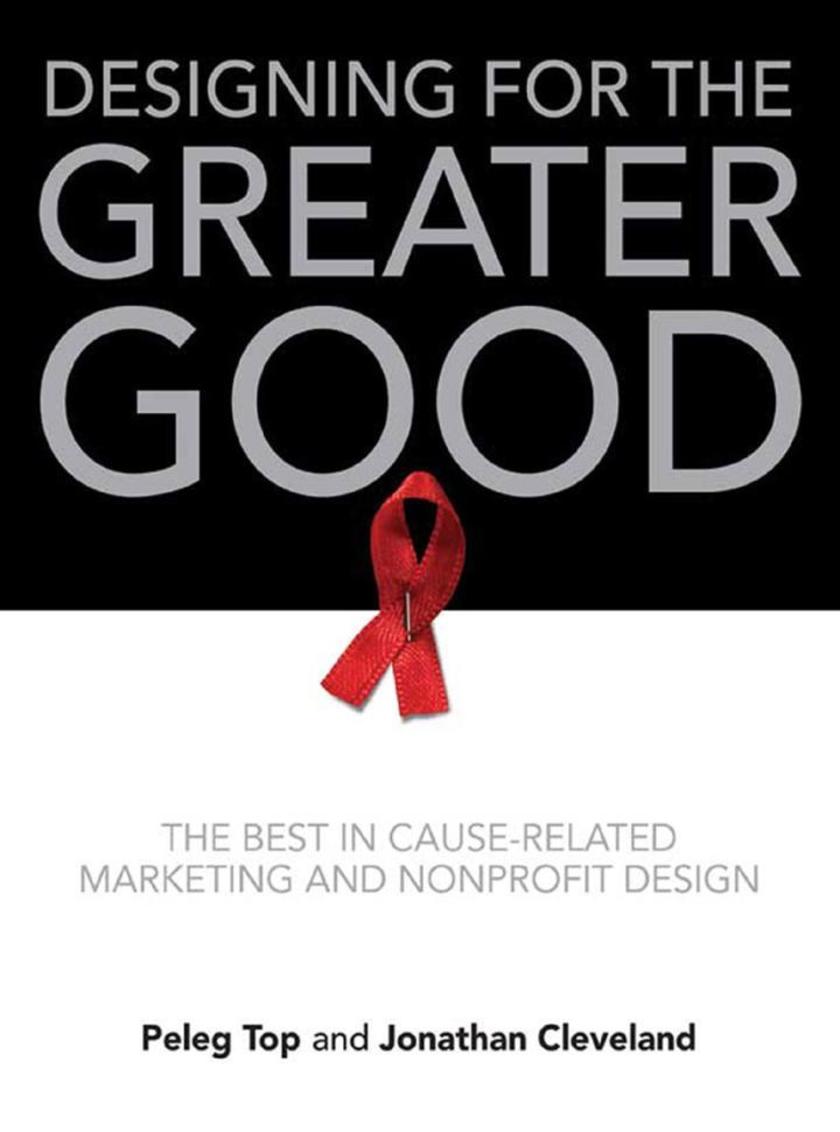
HarperCollins e-books
¥280.71
This first-ever book of its kind, Designing for the Greater Good, features hundreds of illustrated examples of the best nonprofit and cause-related design worldwide, plus 24 inspiring case studies and insights into great nonprofit branding campaigns. A comprehensive resource for designers, creative professionals, marketers, corporate communications departments and nonprofit leaders, this book showcases work from a variety of sectors including Family and Community, Animal Causes, Health, Human Rights, Environmental Awareness, Spirituality, and the Arts. The 24 case studies feature interviews with the designers for such campaigns as the Avon Walk for Breast Cancer, The Hurricane Katrina Poster Project and Get London Reading. Materials presented in Designing for the Greater Good include: cause-specific campaigns and case studies; logos and branding for nonprofits; websites, posters, brochures, advertising, and marketing materials for cause-related events and nonprofits; packaging; invitations for fundraisers and events.
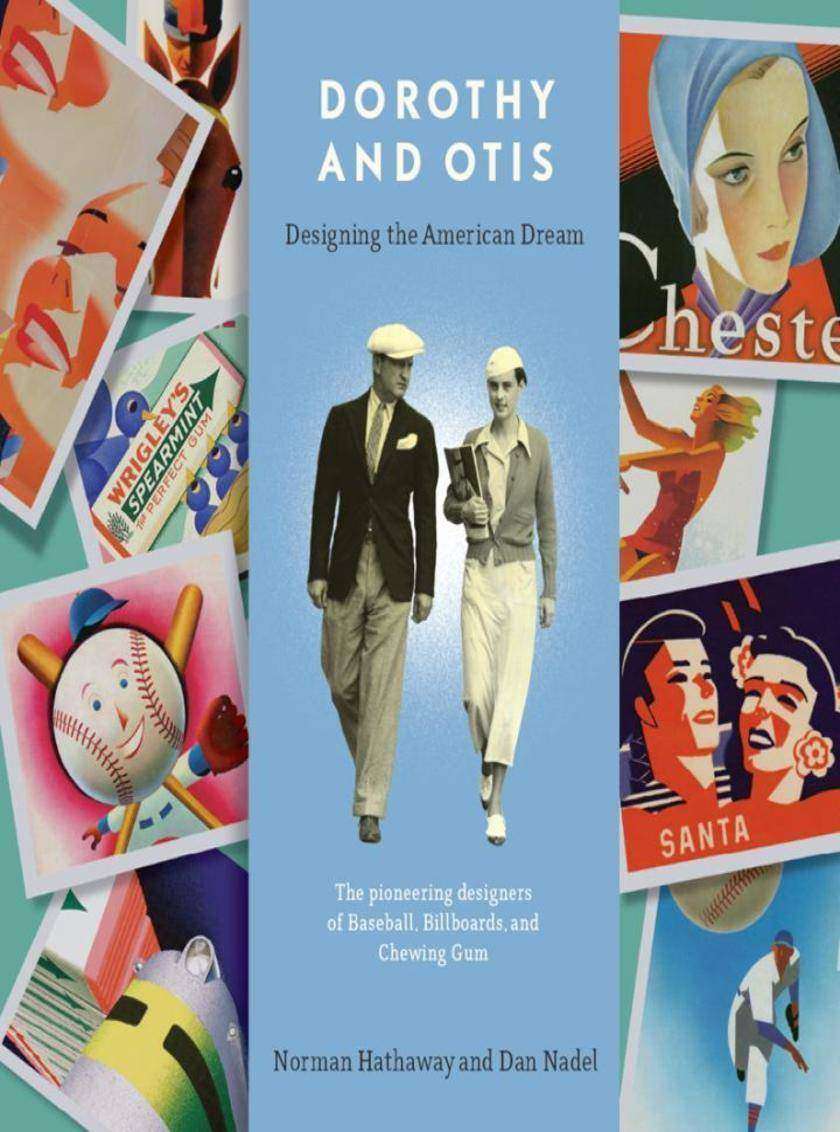
Dorothy and Otis
¥280.71
Dorothy and Otis Shepard are the groundbreaking heroes of North American visual culture. They were the first American graphic designers to work in multiple mediums and scales, but despite the brilliance of their work, their names are little known today. With 330 stunning, colorful images, Dorothy and Otis chronicles their story for the first time. It explores the Shepards' penchant for abstraction and modernism, and shows how the advent of billboard advertising inspired their creativity their large campaigns matched the grandeur of their lifestyle. Throughout, this book demonstrates how their work influenced all aspects of consumer culture, from the styling of Wrigley's Gum and the Chicago Cubs to the design of Catalina Island, which Charlie Chaplin, Clark Gable, and other celebrities frequented.As Dorothy and Otis brings these artists to life, it elevates them to their rightful place in popular culture and makes clear how their work shaped the American dream.With more than 330 full-color photographs throughout
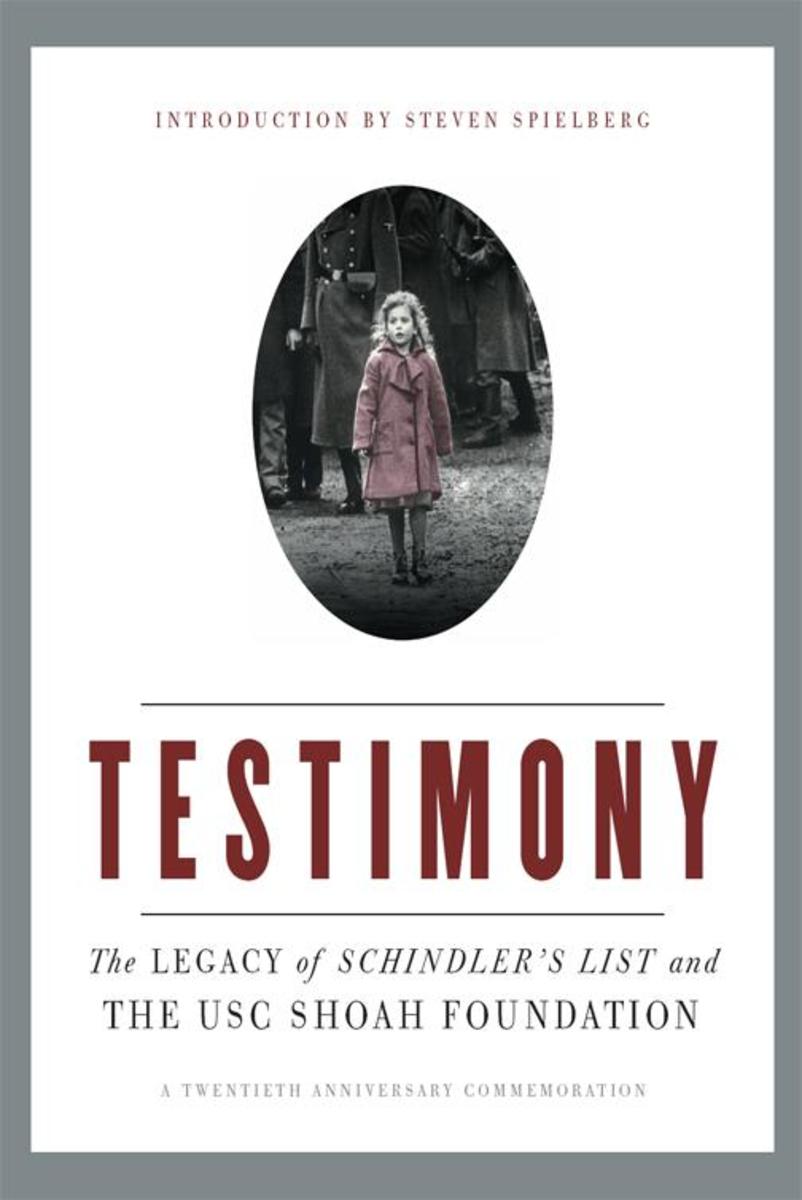
Testimony
¥280.71
Schindler's List was a success by any Hollywood measure and far surpassed all expectations for a black-and-white film about the Holocaust. Released in 1993, it won seven Oscars, including Best Picture and Best Director, and is ranked ninth in the American Film Institute's 100 Greatest American Movies. But its legacy is a far more enduring one. As director Steven Spielberg says, "The film was to be the prelude to the most important work of my life." Spielberg's encounters with Holocaust survivors who came to the filmmakers' location in Poland and told him their stories set him on a mission to collect and preserve survivor testimonies so that these eyewitnesses could become teachers of humanity for generations to come. This twentieth-anniversary commemorative book presents, for the first time, the behind-the-scenes stories of the making of Schindler's List and the creation of the Shoah Foundation, the remarkable organization that Spielberg established twenty years ago. Drawing from the Universal Pictures archives and exclusive interviews, Part One portrays the filmmaking in dramatic black-and-white photographs that echo the film's acclaimed cinematography; in excerpts from the * and the Thomas Keneally novel; and in the words of the cast and crew, including Liam Neeson, Ben Kingsley, and Spielberg. Part Two relates how the Shoah Foundation, in its first four years, raced against time to videotape nearly 52,000 testimonies in 56 countries and 32 languages, while Holocaust survivors and witnesses were still alive to be interviewed. The book also describes in fascinating detail how this worldwide network of dedicated people used pioneering methods and state-of-the-art technologies to collect, index, and preserve the video recordings. With its Visual History Archive digitized, fully searchable, and hyperlinked to the minute, the foundation then developed countless ways to share the testimonies with the world, especially young people. Since joining the University of Southern California in 2006 and renamed the USC Shoah Foundation—The Institute for Visual History and Education, it expanded its educational initiatives as well as its mission, which is now collecting and preserving testimonies from the Armenian, Cambodian, and Rwandan genocides, as well as the Nanjing Massacre. The ultimate lesson of Schindler's List, and of the USC Shoah Foundation story, is rooted in the deeds of Oskar Schindler, who never planned on becoming a household name for heroism but acted out of his humanity to protect his Jewish workers. As Spielberg writes in his introduction, "One person can change the world, and that person is you."

The Big Book of Packaging
¥280.65
Intended as a comprehensive resource for designers, creative professionals, marketers, and retailers, The Big Book of Packaging contains 384 pages of the most innovative packaging designs from around the world. With over 500 featured designs and profiles of twelve of the world's leading designers, the book is a must-have resource for anyone interested in the future of packaging and design. In light of the recent lift in environmental consciousness, this volume of the Big Book Series will devote one third of its content to the increasingly important subject of green packaging-showing designers and retailers how to package their products creatively, responsibly, and at low cost, factors that will be reflected in the books own packaging/binding as well.The Big Book of Packaging will appeal to designers, students, marketers, retailers, and aesthetes alike, providing a thorough look at what goes into building an effective package and how to think "outside the box."

Defiance Series Complete Collection
¥280.47
While the other girls in the walled city-state of Baalboden learn to sew and dance, Rachel Adams learns to track and hunt. While they bend like reeds to the will of their male Protectors, she uses hers for sparring practice. The Defiance series by C. J. Redwine is rich postapocalyptic YA fantasy perfect for fans of Graceling and Tamora Pierce. Includes all three novels and one novella in the series.Defiance: When Rachel's father fails to return from a courier mission and is declared dead, the city's brutal Commander assigns Rachel a new Protector: her father's apprentice, Logan—the boy she declared her love to and who turned her down two years before. As Rachel and Logan battle their way through the Wasteland, stalked by a monster that can't be killed and an army of assassins out for blood, they discover romance, heartbreak, and a truth that will incite a war decades in the making.Deception: Abandoning the ruins of their home to take their chances in the Wasteland, the group soon realizes their problems have only begun: an unknown killer —possibly inside their ranks—has begun picking off the survivors one by one. And Rachel and Logan must question whether the price of freedom may be too great—and whether they can make it out of the Wasteland alive.Deliverance: Rachel has been kidnapped by enemy forces and is being taken to Rowansmark while her love, Logan, is imprisoned and awaiting trial, unable to leave Lankenshire. As uneasy alliances are tested and their enemies plot against them, will the two manage to find a way to rid their world of the tyrannical Commander and destroy the tech that controls the deadly Cursed One once and for all?Outcast: A Defiance Novella: A thrilling, dangerous adventure, this digital prequel novella to C. J. Redwine's Defiance and Deception features Quinn, a popular character from the series.
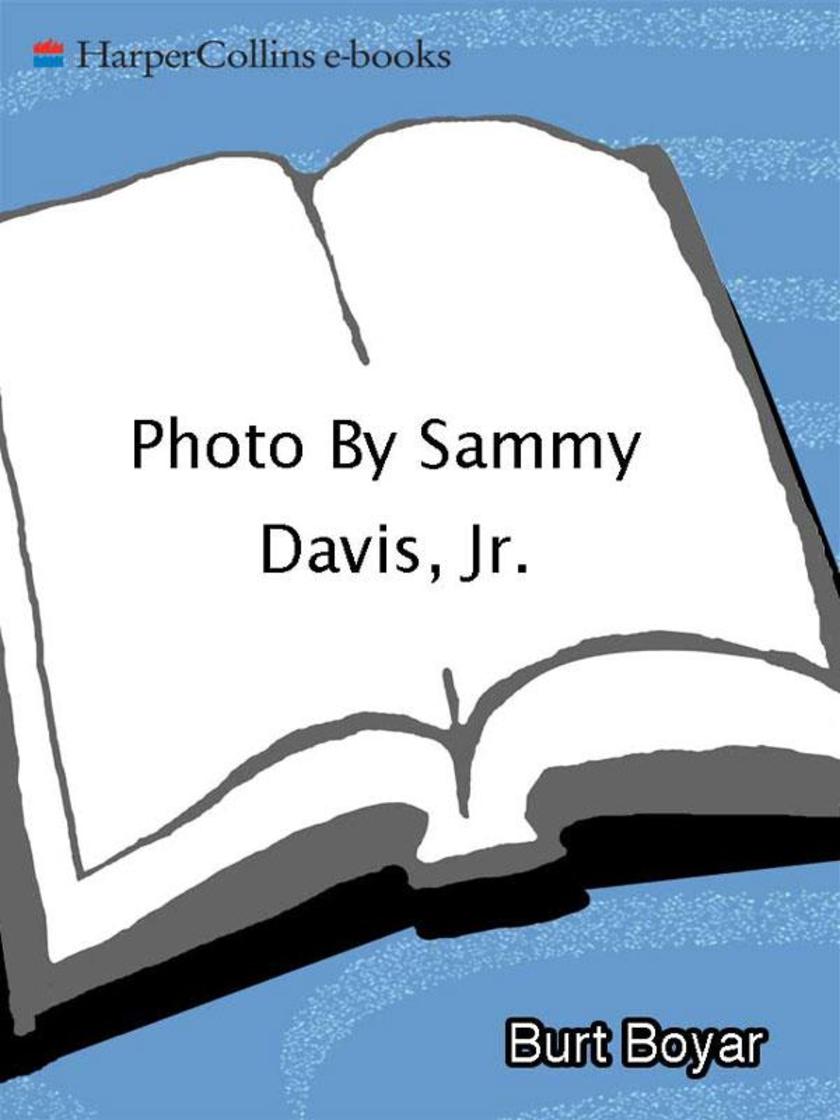
Photo by Sammy Davis, Jr.
¥280.42
Sammy Davis, Jr. will forever be remembered as one of America's finest entertainers. An all–around performer who could sing, dance, and act, Davis broke racial barriers in the entertainment world and became the only non–white member of the Rat Pack. Only now, however, is Davis's talent as a photographer finally being recognized. In this previously unpublished collection of black and white photography, readers will be fascinated by Davis's portrayals of A–list performers, iconic world leaders, and scenes from everyday life. Davis's subjects include dozens of classic celebrities–such as Frank Sinatra, Marilyn Monroe, Paul Newman, and James Dean–who are often photographed at their most casual and revealing moments. Accompanying the pictures is an assortment of remembrances by Burt Boyar, a longtime friend and traveling companion of Davis who collaborated with the entertainer on both of his autobiographies. Through a series of memorable anecdotes, Boyar reflects on Davis's many achievements as well as the private moments they shared as friends. Along with Davis's candid shots of ordinary life–from a group of children laughing to a baseball game at the Washington Monument–these stories reveal a side of the performer far removed from his Rat Pack persona. The release of this book will also coincide with the release of Burt Boyar's upcoming documentary, Sammy Speaks, created from his extensive archive of taped conversations with the star.
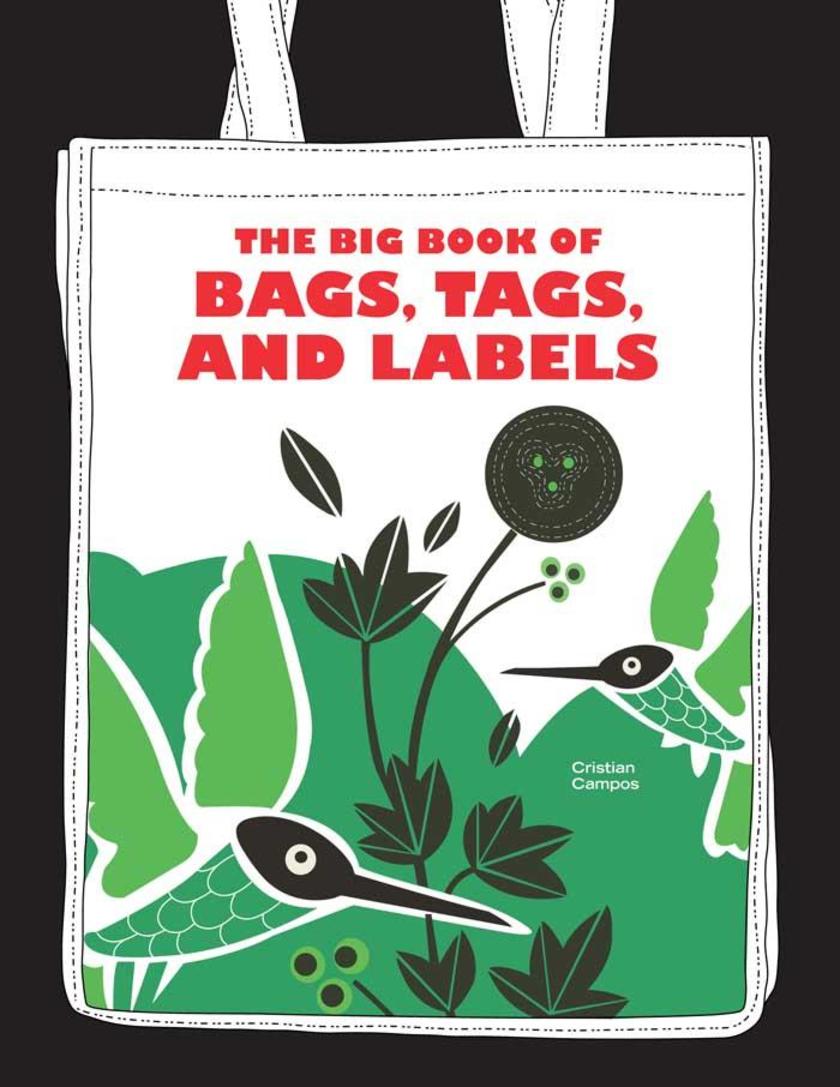
HarperCollins e-books
¥280.42
Bag, tag, and label design is critical in the world of marketing and sales, yet can be challenging to execute successfully. The Big Book of Bags, Tags and Labels is a unique visual collection featuring work from top companies around the globe. It offers hundreds of ideas, pages of inspiration, and loads of professional advice from designers on styles ranging from classic to modern, sophisticated to conceptual, with a consistent focus on name recognition and branding.


味道的传承
¥280.00
书籍包括 1901235624,1901235626,1901235628,1901235630


画说金山岭长城
¥280.00
万里长城是中华民族的骄傲和象征。滦平县的金山岭长城是万里长城中气势宏伟、敌楼密集、建筑独特、保存完美的一段,素有『万里长城,金山独秀』之美誉。


中国人民大学802经济学综合历年考研真题视频讲解【17小时高清视频】
¥280.00
中国人民大学802经济学综合历年考研真题视频讲解【17小时高清视频】




 购物车
购物车 个人中心
个人中心



